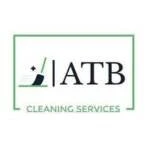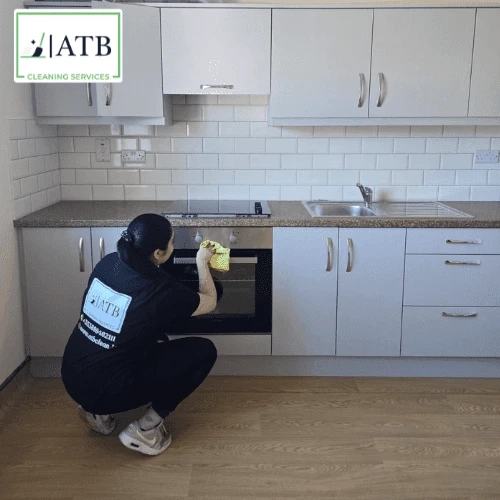A clean environment leaves a lasting impression and influences health, productivity, and comfort. In your home or business space, the right cleaning schedule does make all the difference. Some people hire a regular cleaning service to keep their environments tidy and clean. While the daily method treats the day-to-day, other situations need a complete, full-scale process. Having knowledge about the difference between daily cleaning and deep cleaning enables homeowners and businesspeople to decide intelligently, creating healthier and friendlier spaces.
What Is Regular Cleaning?
Daily cleaning is the frequent maintenance that keeps dirt and clutter at acceptable levels. At home, it is normally weekly or bi-weekly. In offices, shops, or restaurants, it's daily or several times weekly.
Typical Tasks:
- Home: Dusting, vacuuming or mopping floors, wiping sinks and toilets, cleaning the kitchen, and taking out trash bins.
- Commercial: Cleaning office desks, cleaning break rooms, sanitizing restrooms, vacuuming carpets, and disposing of trash.
Benefits:
- Maintains a clean, professional look in the workplace and a cozy feel at home.
- Prevents dust and dirt buildup in high-traffic areas.
- Saves time and money by keeping spots under control all the time without making problems into full-blown issues.
Best For:
- Households with frequent household cleaning.
- Offices, restaurants, or storefronts with everyday customer and employee traffic.
What Is Deep Cleaning?
Deep cleaning goes beyond surface-level maintenance. Deep cleans go after areas that are generally avoided while regular cleaning is being performed. Deep cleans are typically scheduled monthly, quarterly, or seasonally, depending on the facility.
Typical Tasks
- Home: Baseboard cleaning, vent cleaning, and ceiling fan cleaning; grout scrubbing; window washing; and deep-cleaning appliances like ovens and refrigerators.
- Commercial: Sanitizing high-touch areas like elevator buttons and door handles, HVAC vent cleaning, carpet shampooing, and degreasing kitchen equipment.
Benefits
- Improves hygiene and indoor air quality.
- Increases the lifespan of furniture, flooring, and appliances.
- Eliminates stubborn stains, odors, and hidden grime.
Best For:
- Homes preparing for guests, moving in or out, or addressing allergies.
- Businesses are undergoing audits, seasonal refreshes, or post-construction cleanup.
Key Differences Between Regular and Deep Cleaning:
- Scope: Routine cleaning is surface, while deep cleaning targets hidden dirt and problem areas.
- Time Required: Regular visits are 1–2 hours for residences or short daily shifts for businesses. Deep cleaning may require several hours or even days.
- Tools and Supplies: Routine cleaning uses a vacuum, a mop, and sprays. Deep cleaning typically involves steam cleaners, industrial scrubbers, or specialized solutions.
- Cost: Routine cleaning is cheap, while deep cleaning is more labor- and resource-intensive.
- Effect: Regular cleaning maintains things clean. Deep cleaning renews and revives an area.
Signs You Need Regular Cleaning
- Dust and minor messes are obvious.
- Continuing clutter is created through everyday living or work activities.
- You want a clean house or business to look for clients and employees.
Signs You Need Deep Cleaning:
- Strong smells, stains, or easy-to-see dirt.
- Dust buildup in vents, corners, or behind furniture.
- Seasonal transitions, move-ins or move-outs, or pre-party setup.
- High-traffic commercial environments like gyms, kitchens, or healthcare spaces.
Combining Regular and Deep Cleaning:
The best results typically come from a mix. Regular cleaning keeps environments clean and tidy and hygienic daily, and deep cleaning adds extra attention to reset and maintain long-term cleanliness levels.
Example Schedules:
- Residential: Weekly regular cleaning with a quarterly deep clean.
- Commercial: Daily regular cleaning with monthly deep cleaning.
This balance catches cost, consistency, and effectiveness.
Effective Cleaning Tips:
For Routine Cleaning:
- Home: Use a checklist for consistency. Focus on high-traffic areas like the kitchen and bathroom.
- Business: Focus on restrooms and high-touch areas. Clean at non-peak times to minimize disruption.
For Deep Cleaning:
- Home: Divide the work into zones, a room a day. Rent equipment like carpet cleaners.
- Commercial: Use industrial-strength machinery for heavier areas. Perform deep cleaning during off-business hours or downtime.
DIY vs. Professional Cleaning:
- Professionals: Provide experience, convenience, and access to specialized equipment.
- DIY: Cheaper but time-consuming and often less thorough.
Both routine cleaning and deep cleaning serve valuable purposes. Routine home and commercial cleaning services maintain everyday tidiness under control and prevent accumulations, whereas deep cleaning restores freshness and addresses overlooked spots. For residential owners, the choice generally revolves around lifestyle and seasonal requirements. For businesses, maintaining a spotless environment is a matter of professionalism, compliance with regulations, and ensuring safety.
Where office, restaurant, or shopping space is involved, commercial cleaning services provide quality and consistency. In employing regular and deep cleaning methods as a blended approach, they create rooms that not only look fabulous but are also comfortable and healthful for everyone who enters.



